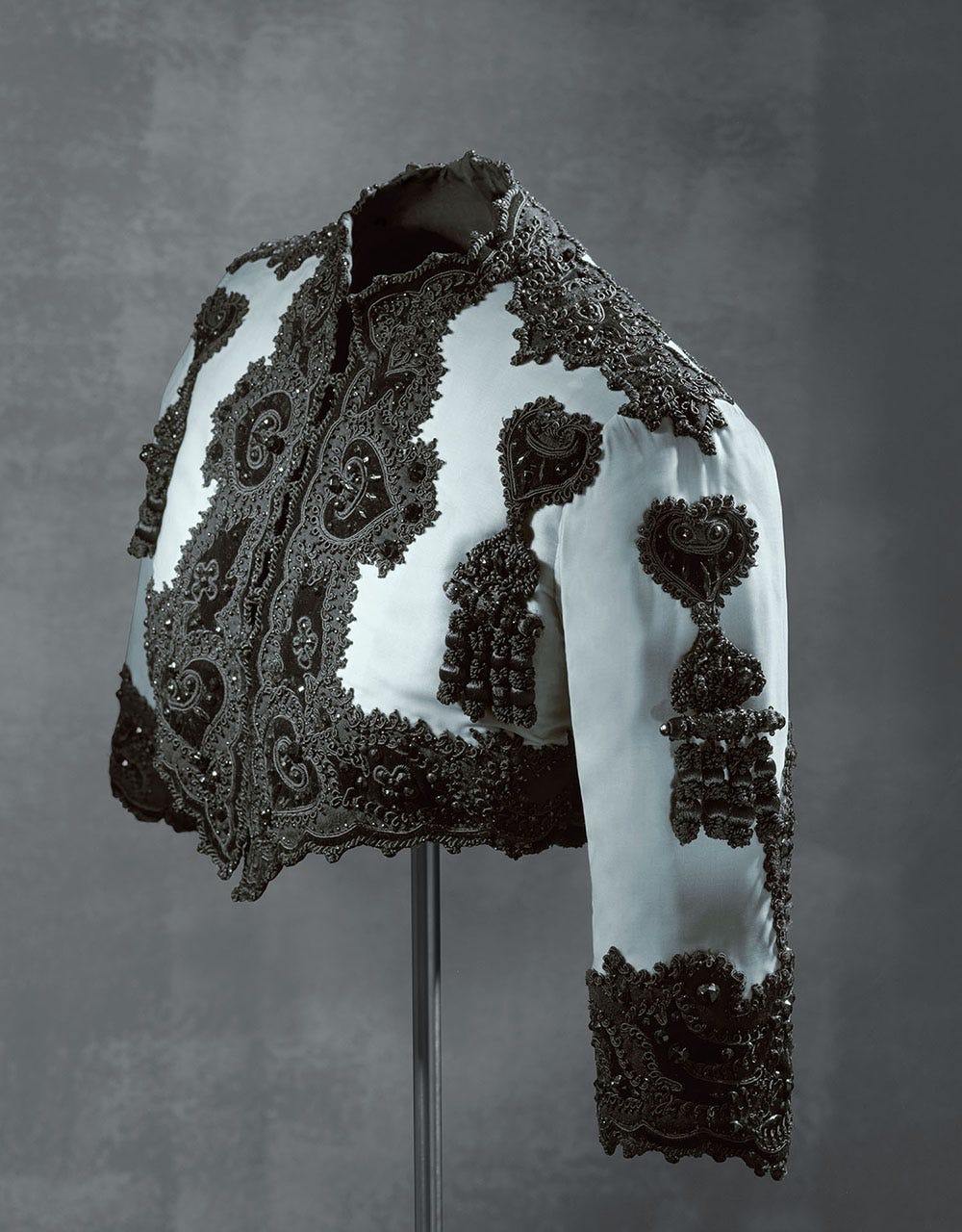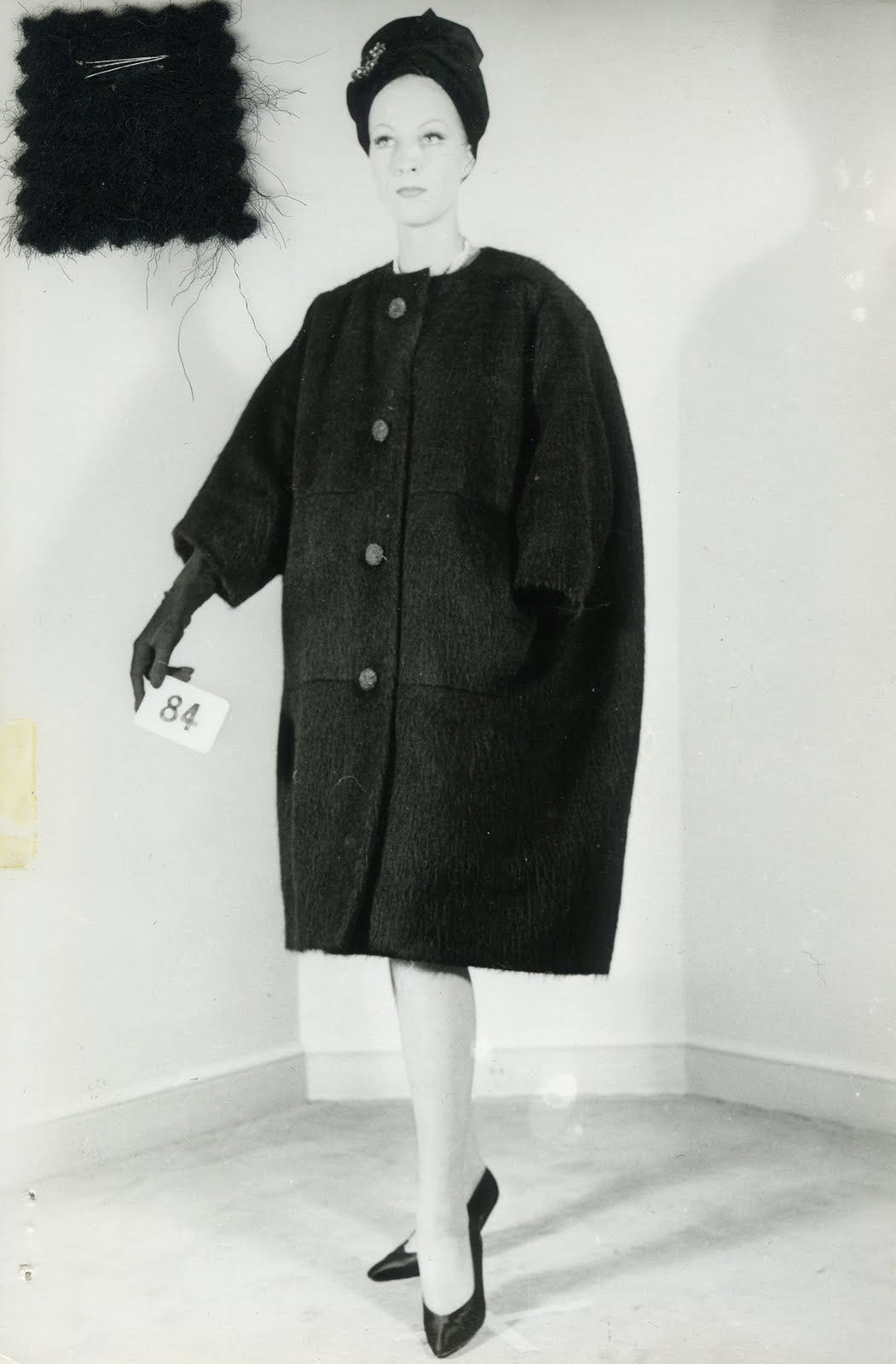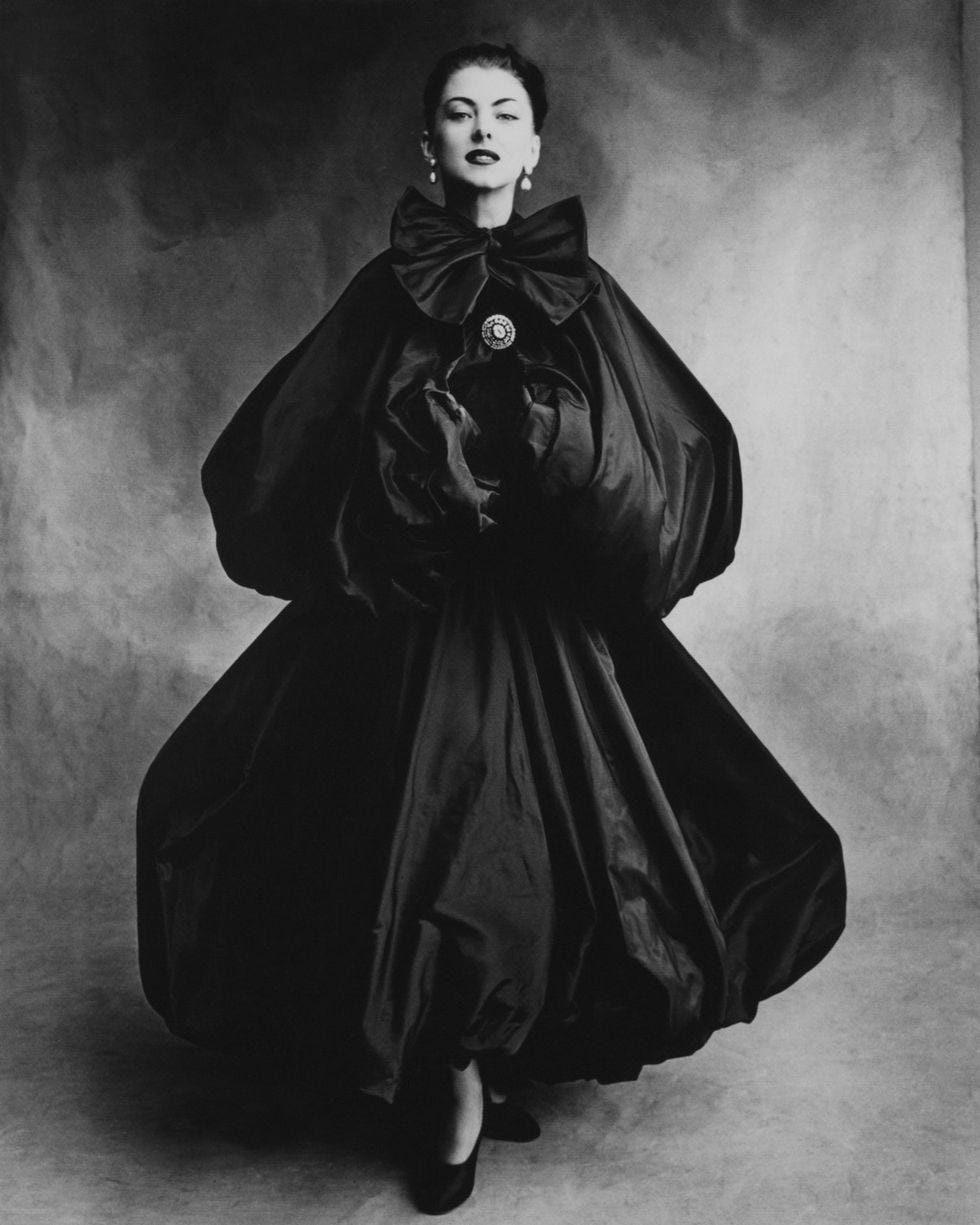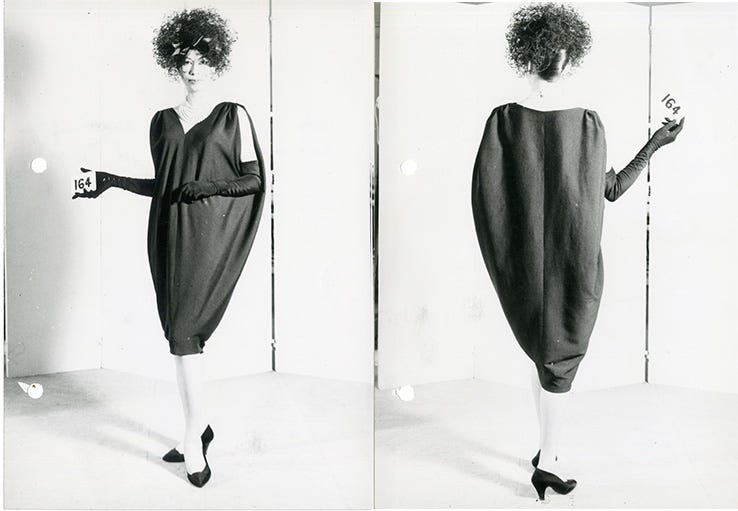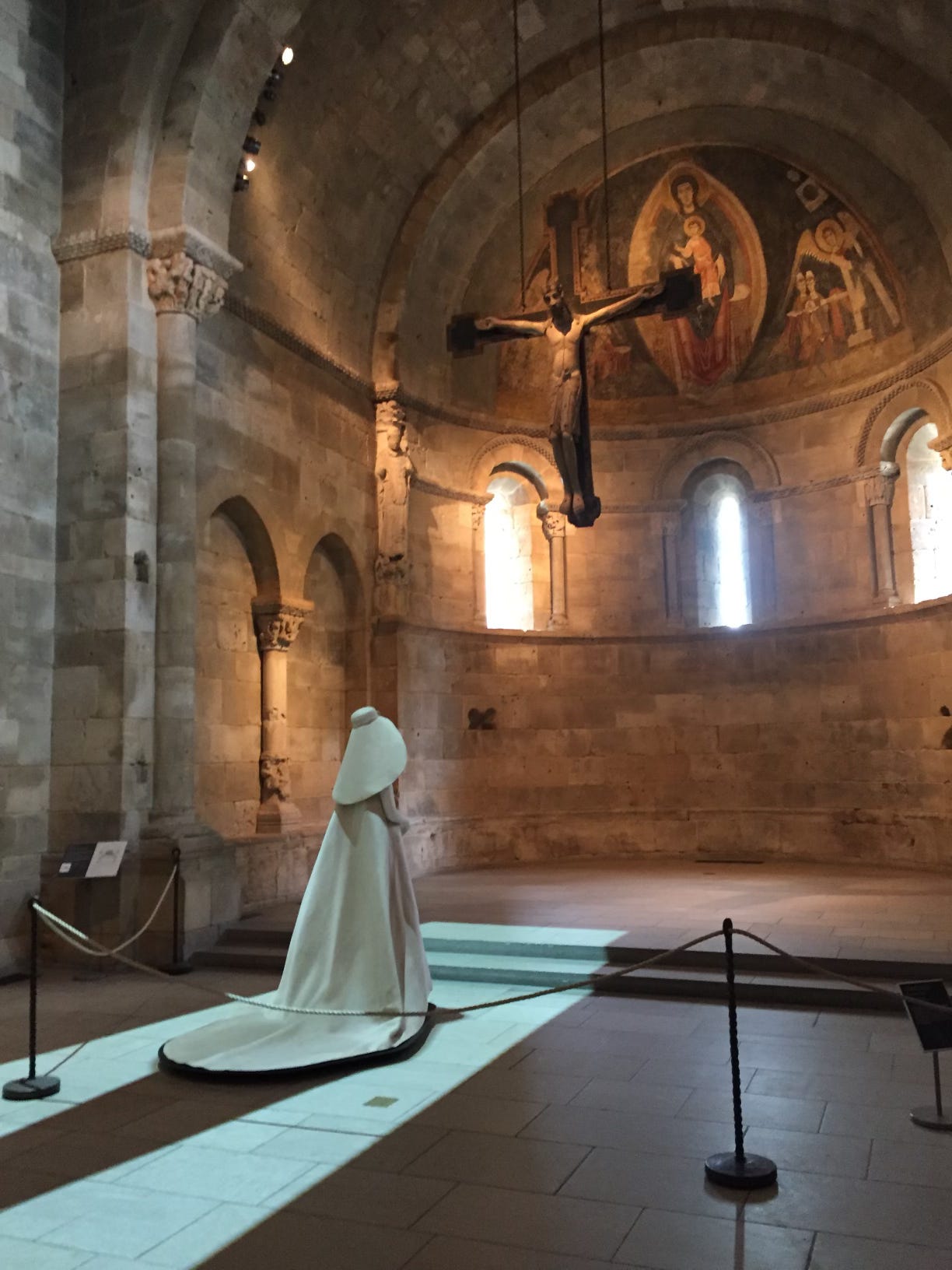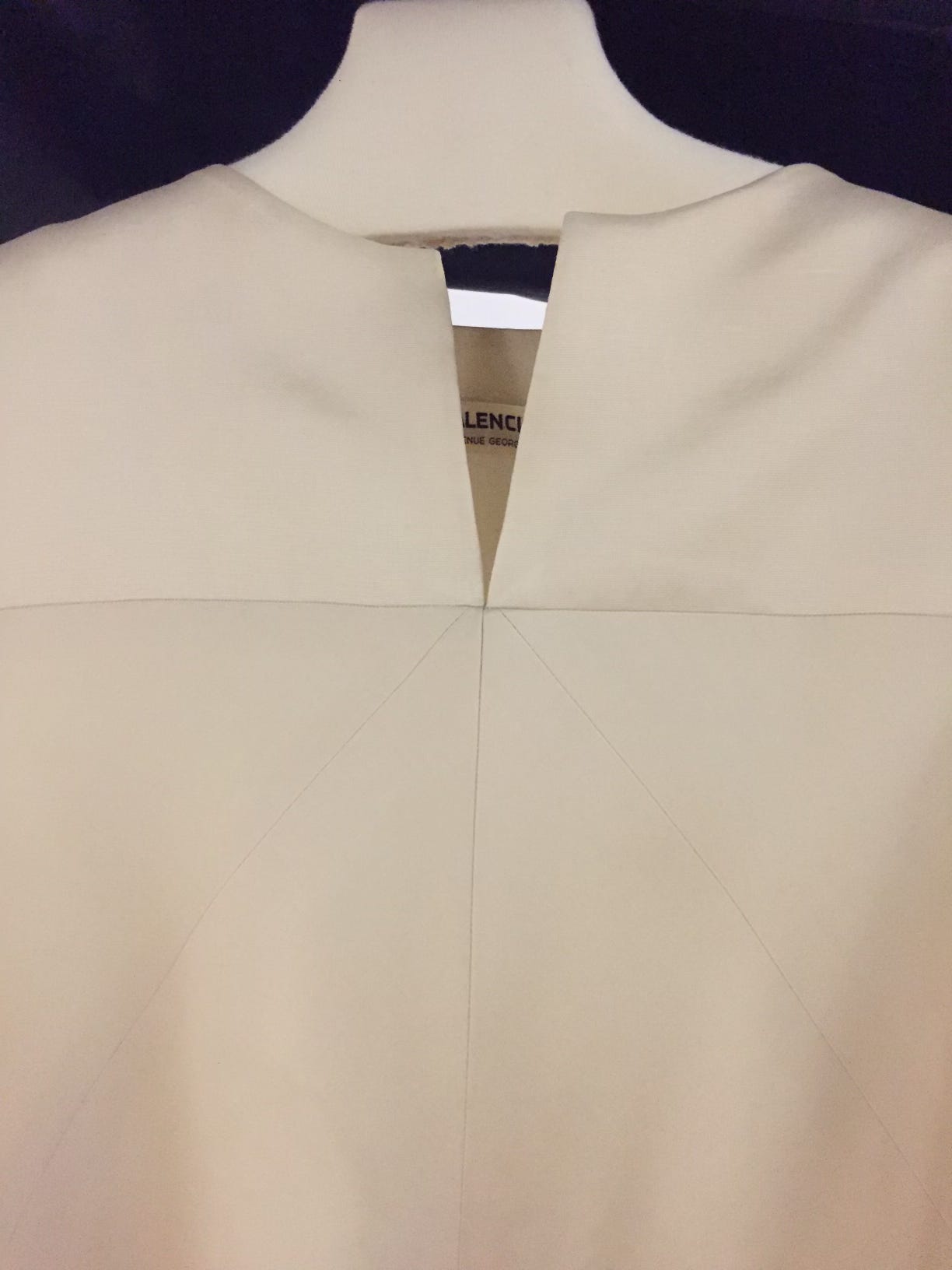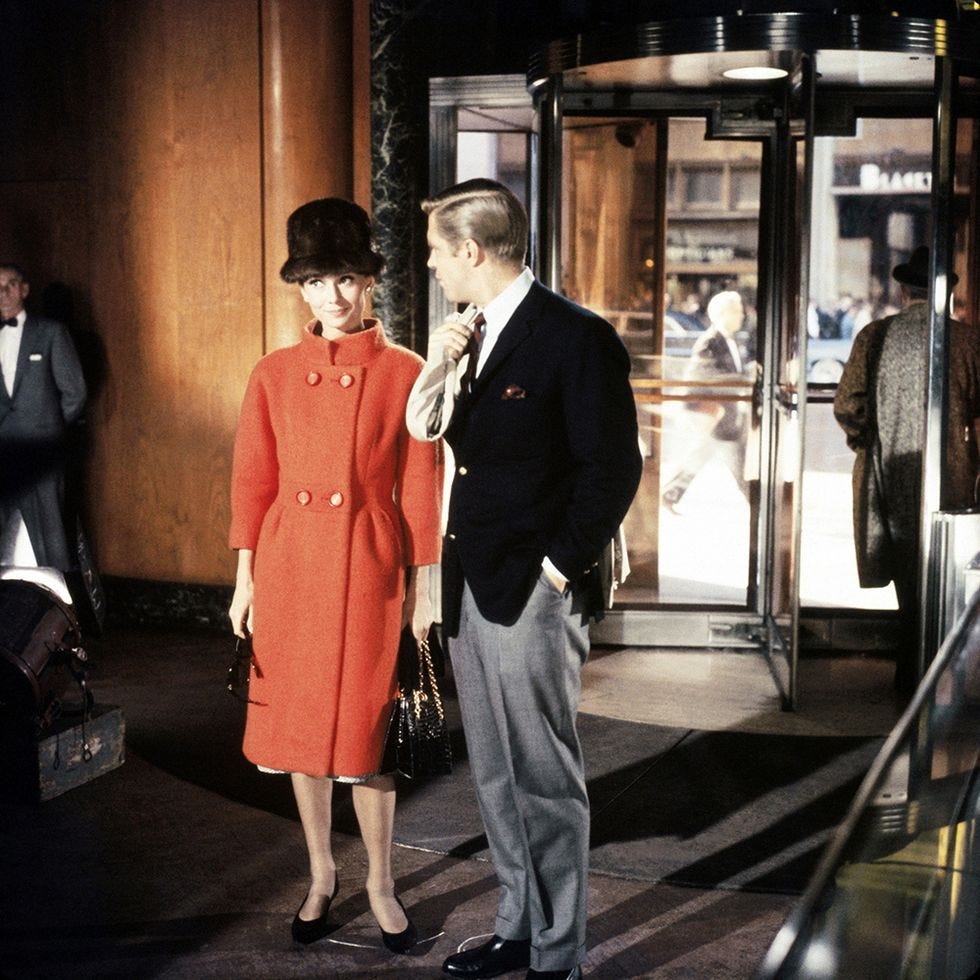Then + Now 01: Cristóbal Balenciaga
A new series sharing some of my favorite fashion designers.
Recently, a friend asked me how I would answer if someone asked me who my favorite fashion designer was. I must admit I’ve always found this to be a difficult question to definitively answer.
There are many designers I admire and fashion houses I love. But defining my “favorites” (no, I can’t choose just one!) tends to hinge on individual designers working in houses at certain times throughout history. They are also based off of my experience studying fashion history and working within the context of fashion collections over several years during my 20s and 30s.
My friend asked me to round up looks from my favorites to share, so I decide to do so over a series of posts. My criteria for this exercise is: Which designers come to mind right away when asked this question? Which designers past or present still inform the way I get dressed today? Here is the first of the names that I immediately think of and that still excites me year after year.
Balenciaga, Cristóbal Balenciaga (1919-1968)
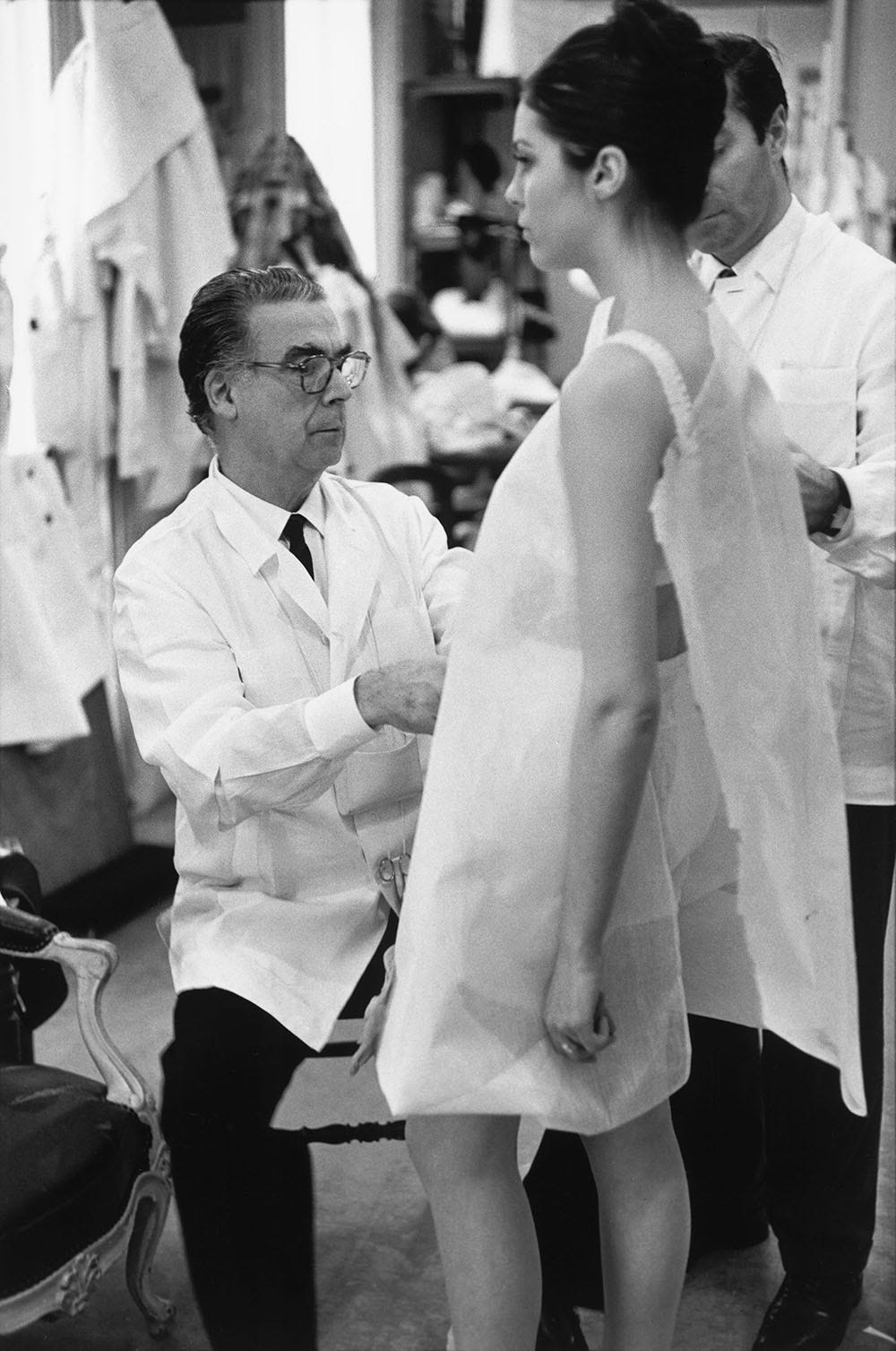
Cristóbal Balenciaga was famously described by fellow couturier Christian Dior as “the master of us all.” Influenced from an early age by design in his native Spain, Balenciaga built couture houses both in Spain and then Paris known for their meticulous cuts, fabrics, and embroideries. A private man, he gave no interviews during his career and was long-rumored not to exist.
I won’t try to craft a comprehensive biography or career summation for Balenciaga—for those curious, you can read The Master of Us All by Mary Blume, check out the Heilbrunn Timeline of Art History, Google Arts & Culture, or this wonderful info and videos from the V&A.
Balenciaga’s silhouettes developed in the 1950s and 1960s are what stand out to me with a singular, striking quality. In contrast to the wasp-waisted and hyper feminine garments found at Christian Dior, Balenciaga began to play with the space that existed between clothing and a woman’s body. Among his most famous developments in silhouettes were the cocoon coat, balloon skirt, and sack dress.
In 1958 Balenciaga worked with the Abraham textile company to develop his own fabric, silk gazar, which would hold the shape and volume his designs required.
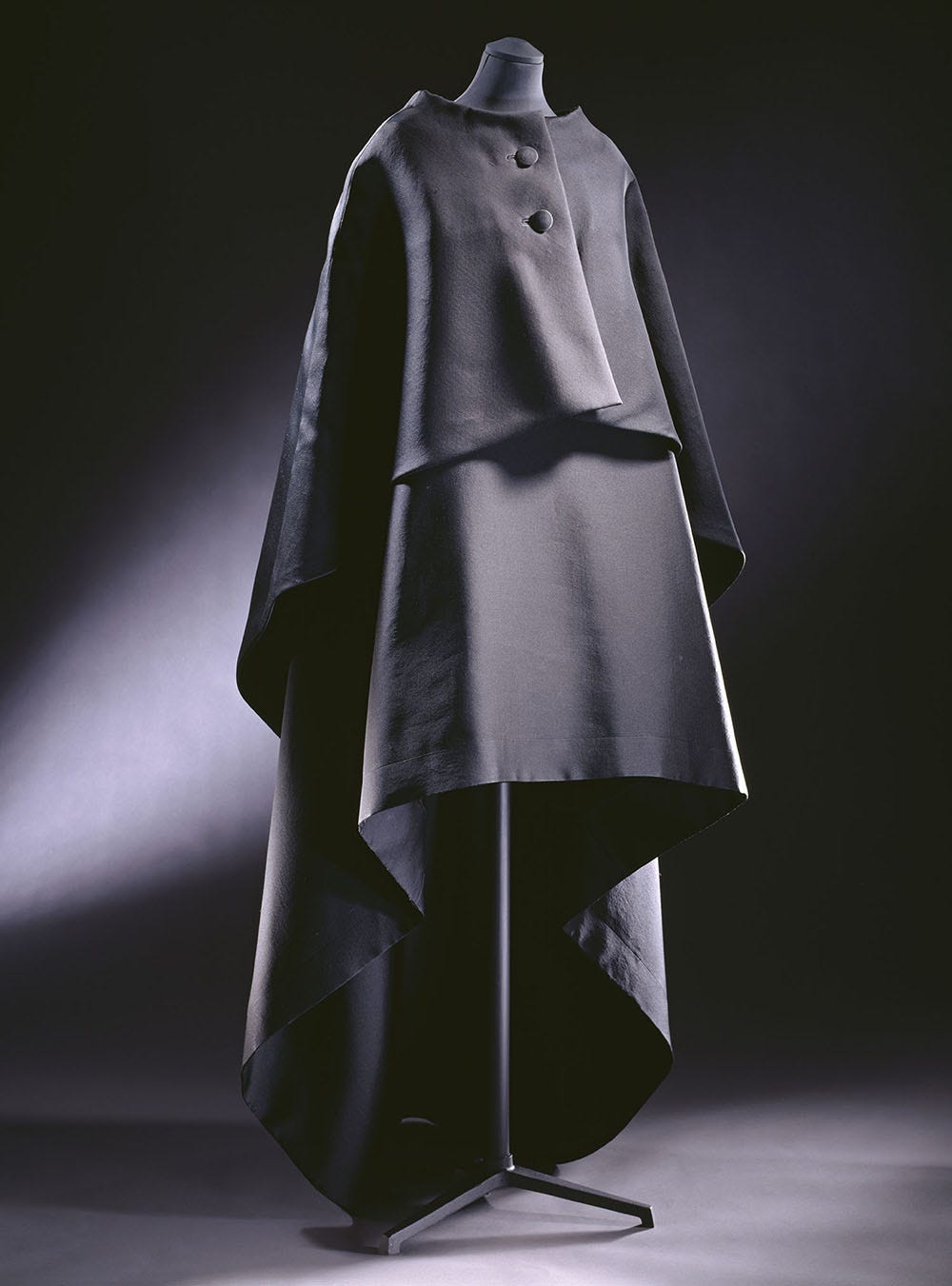
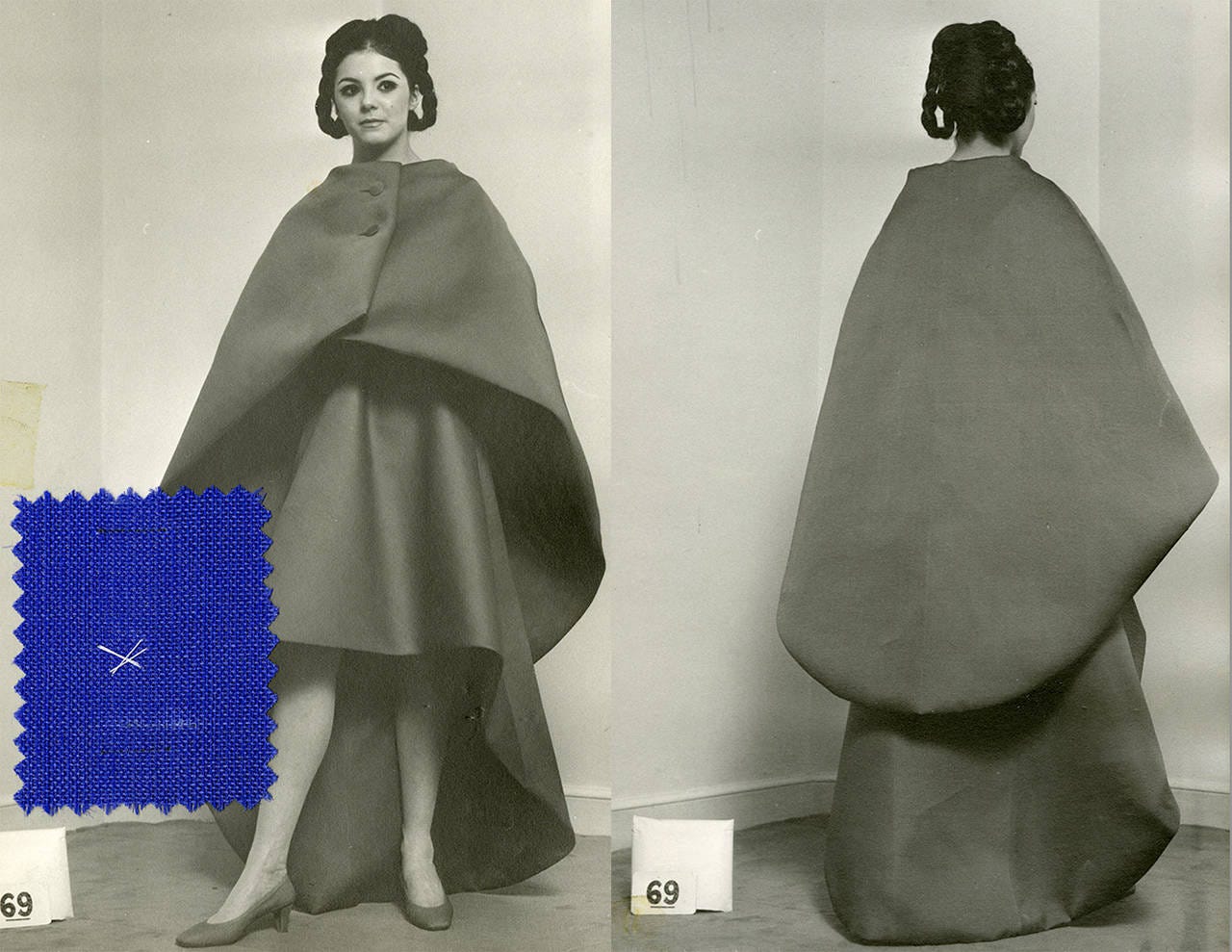
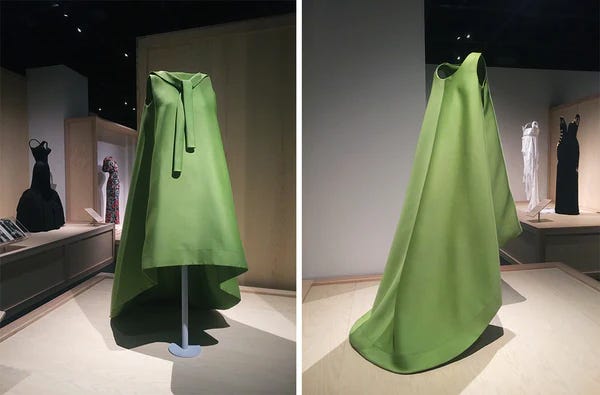
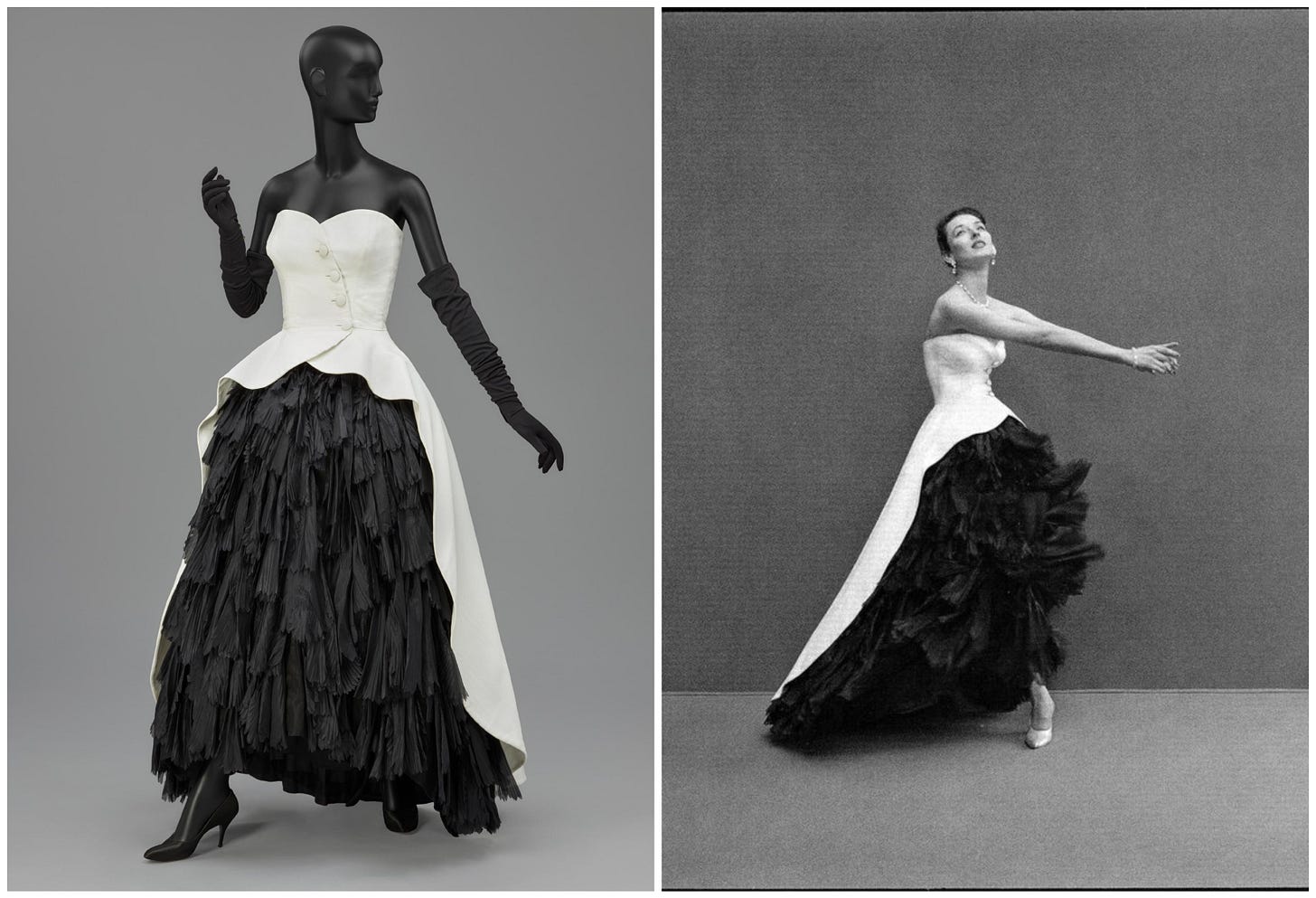
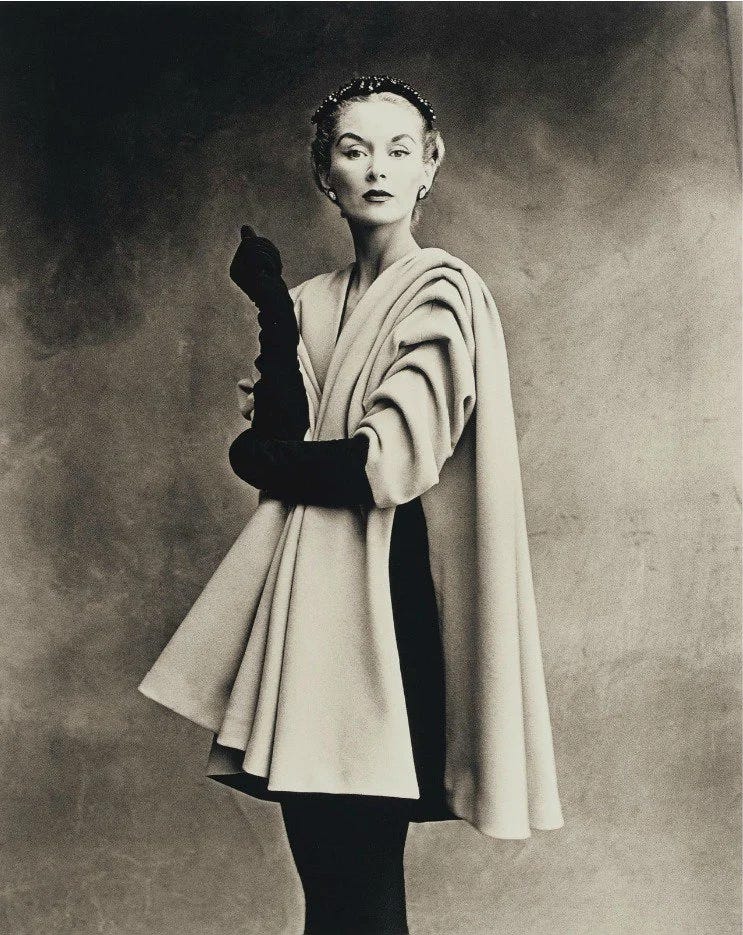
During my time working in the collection of the Costume Institute at the Metropolitan Museum of Art and then as a contract worker in exhibitions at the Philadelphia Museum of Art, I was privileged to see, study, and preserve Balenciaga’s work up close. I appreciated his clean craftsmanship, sense of color, and use of fabrics that seemed at once both softly voluminous and armor-like.
While preparing for the 2018 exhibition Heavenly Bodies: Fashion and the Catholic Imagination, I was able to observe Balenciaga’s 1967 wedding ensemble both on the hanger and in full form on a mannequin (apologies for poor image quality, these were taken on an old iPhone).
Cut from silk gazar and crafted with no side seams, the dress relied on careful piecing, visible at the front and back of the garment, to craft the voluminous and modern shape. If memory serves, it was constructed of six pattern pieces draped around the body.
My interpretation: Many of these shapes and silhouettes live in my head rent-free and have seeped into the way I view and consume fashion. I wore this Cos trapeze dress to an exhibition opening in 2022 and would like to think I paid a small homage to the Master of Us All.

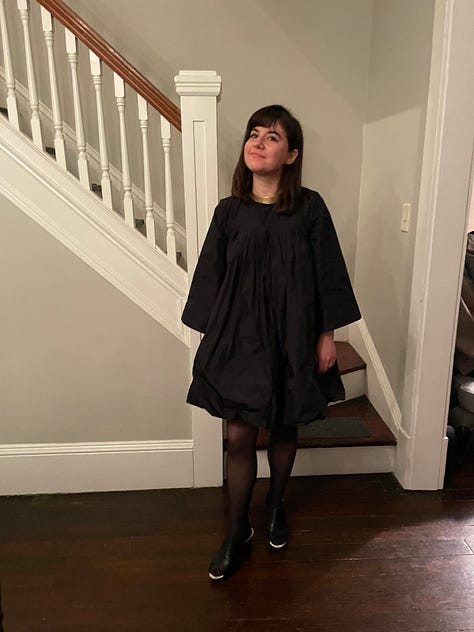
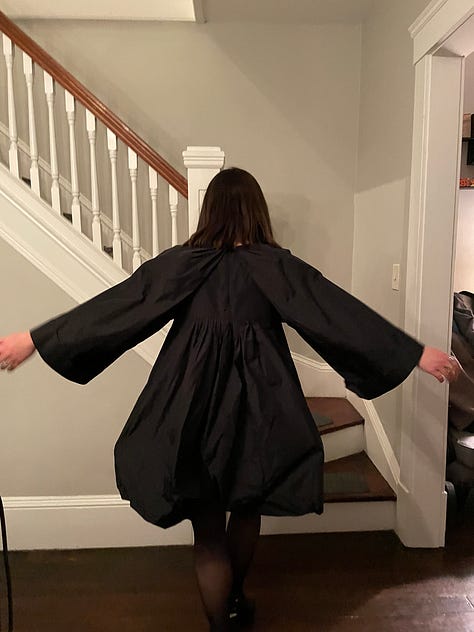
Honorable mention: Hubert Givenchy worked with Balenciaga before opening his own house. His relationship dressing Audrey Hepburn for film a la Breakfast at Tiffany’s was legendary and introduced me to many Balenciaga-esque shapes before I was familiar with the elder couturier.




